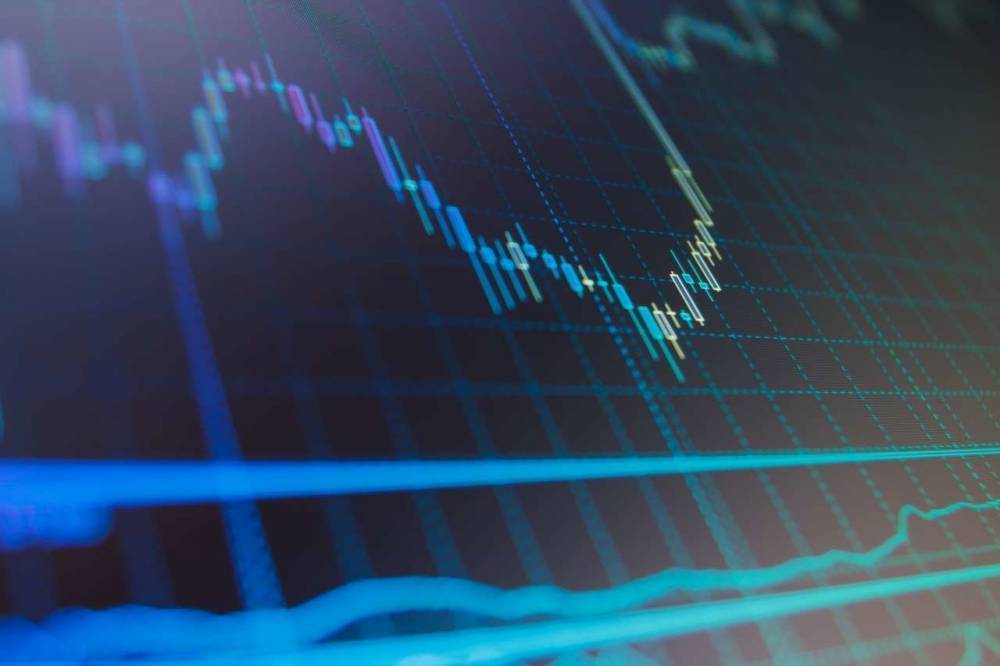
EXANTE Lead Strategist Janis Kivkulis:
The mid-2021 bitcoin bear market closely mirrors the late 2019 bear market: sharp drops, equally sharp rebounds andrelatively quiet periods in between. Over time, the collapses become deeper and deeper until a “bottom” is reached, below which the market cannot collapse. Then it was found in December, after which a new rally immediately began. Will a similar market reversal happen again this summer?
Interrupted Rally 2019
If in 2013 and 2017 the crypto market grew from Januaryto December, then in 2019 and 2021 he “deceived” investors: the rally turned out to be shorter than many expected, after which it gave way to a bear market phase.
The notorious crypto winter ended in 2019, andin early April, BTC jumped from around $4,000 to $5,000, and in June it reached $13,000. Many were confident that the 2017 record ($20,000) would soon be repeated, but the rally fizzled out.
There were several reasons for the slowdown in the rally in the summer of 2019.
- Most investors invested in the spring, and in the summer they no longer had free money or confidence in the continuation of the rally.
- There were no institutionalinvestors who are talked about a lot today. Deliverable cryptocurrency futures exchanges Bakkt and ErisX remained at the stage of legal registration in mid-2019.
- There was a political scandal around the projectLibra stable currency from Facebook. As a result, any global private stablecoin projects have been declared a threat to global stability. Classic cryptocurrencies such as BTC were also subject to some criticism, which especially demotivated investors.
The exchange began operating in September 2019deliverable BTC futures Bakkt. This was a revolutionary event, thanks to which institutions in the United States received a completely legal opportunity to buy the cryptocurrency itself, and not just settlement papers, as in 2017 on the CME exchange. Many thought that the arrival of institutional capital would resume the rally, but Bitcoin continued to sag. By the time Bakkt opened, Bitcoin was worth about $10,000, and by the end of the year it had dropped to $7,000. Only since January 2020 has it returned to sustainable growth.
Bear market 2019
At the time of opening, Bakkt BTC was worth about $10,000 – less than at summer highs, but clearly more than during cryptowinter.
It is worth noting that Bakkt and ErisX exchanges forinstitutional investors began to be created back in 2018. Many large investors were attracted by the opportunity to buy cryptocurrency at the lows of the end of the year. But in April 2019, the crisis ended, and institutions still did not have access to the digital asset market. They did not have time to purchase it at the desired prices.
September 2019 prices hardly pleased customersBakkt, and the site’s turnover initially amounted to less than $1 million per day. However, the market continued to decline, and exchange turnover gradually increased by orders of magnitude. The price of BTC fell several times to new lows.
- On September 26, shortly after the opening of Bakkt, the BTC rate plummeted from $10,000 to $8,100
- On October 6, it was slightly below $ 8000 for a while.
- On October 24, BTC fell to $ 7,500, but then rebounded to $ 9,500
While the market seemed to be holding back firmly to $ 8,000 and below, the following months brought new lows.
- November 24 – $7000
- December 17 – $6600
It was not possible to collapse the rates further, and in January BTCwent up from $7,000 to $9,500. In December, the bears “groped” a bottom in which there are critically few sellers left in the market, and shortly thereafter the market turns bullish. Many investors who did not have time to purchase cryptocurrency during the crypto winter did so in December, after which they found themselves in the mood for growth.

Bear market 2021 versus 2019
The 2021 BTC Bear Market Started in Mayafter Elon Musk’s speeches about the unenvironmental friendliness of the leading cryptocurrency. If on May 12 the BTC rate was $57,000, then on the 14th – $48,000. Perhaps the fall would have been limited to this if Musk had not been “helped” by US and Chinese authorities. The United States announced the prosecution of the world's greatest crypto exchange, Binance, for dubious actions in the country, and China banned its banks and payment organizations from providing cryptocurrency services.
This was followed by a considerable series of newstatements and actions of Elon Musk (both against bitcoin and for), Chinese officials (mostly against), large investors such as Microstrategy (mostly for) and many analysts with forecasts. As a result, we got a chain of price anti-records, reminiscent of 2019.
- May 19 – $35000
- May 24 – $32400
- June 9 – $31700
- June 22 – $29000
As in 2019, behind each of these collapsesfollowed by a rebound and some stable period. Thus, during the described period, the price of BTC returned to the $40,000 mark more than once, and it even seemed that it was ready to stabilize there.
The 2019 bear market took at least 4months, while the 2021 bear market has lasted 1.5 months so far. But it seems that now events are unfolding faster. There is radically more institutional capital in the market, and the active participation of politicians and opinion leaders speaks of a game using frankly “heavy artillery.”
This artillery may have already borne fruit:The overwhelming majority of the collapse from $57,000 to $32,400 (43%) occurred in May, and in June, the minimum BTC rate has so far only been reduced by an additional 6%. It cannot be ruled out that the bears, taught by the experience of 2019, were able to find the market bottom near $29,000 much faster this time.
Where is the price bottom now and should we expect a resumption of the rally
Although Bitcoin hit new lows in Junethe May anti-record is only 6%, this in itself does not prove that the bottom is near. For comparison, we can recall November 2018, when BTC suddenly dropped in price from an almost stable $6,000 to $3,500. But now such a scenario seems unlikely.
According to various analysts,"impenetrable" The levels of the first cryptocurrency were supposed to be in the region of $24,000-$32,000. Considering the latest data – $24,000-$29,000. There are serious arguments in favor of the fact that the bottom is close.
Unlike the bubbles of 2013 and 2017, the market is nowless speculative. A very significant portion of its participants have a long-term focus. According to research, in March, approximately 50% of BTC's capitalization came from retail investors, the other 50% – on institutions. Both of them are now well aware of the long-term positive trend of BTC, which, moreover, has become legal in the United States as an exchange commodity.
If during the 2018 bubble burst BTClost 5/6 capitalization (the vast majority of market participants sold purchased assets), then this year it has so far lost only half of its capitalization. Considering that for several years Bitcoin on average has doubled in price per year, there is little point for long-term investors to dump a depreciated asset: it is easier to wait a year, during which it is highly likely to repeat the April highs. Cryptocurrency no longer seems like a speculative toy that just needs to be resold at a profit and forgotten.
In addition, if we extrapolate perennialtrends since 2014, then the most accurate doubling of rates per year is observed specifically for “bottom” levels. In particular, at the end of 2018 it was about $3,500, at the end of 2019 – about $7000. Continuing this pattern, BTC is unlikely to trade below $28,000 by the end of 2021, making it unwise to sell at lower prices.
Seeing that the bears cannot bring the rate down to $20,000-$25,000it turns out, “bargain hunters” BTC is increasingly being purchased at levels around $30,000. Having made such purchases, they become interested in the return of the bull market. And it cannot be ruled out that he will return this summer.





